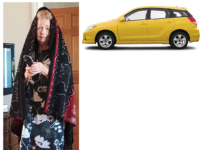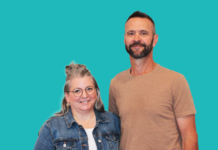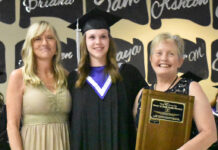The Saskatchewan government has initiated a series of enhanced COVID-19 precautions in their latest attempt to slow infection numbers across the entire province.
A mandatory masking policy has been implemented for all indoor public places in Saskatchewan effective Thursday, November 19. This increases their previous precautions of mandatory masking in communities with populations over 5,000 instituted back on Friday, November 13.
The province has also again reinstated the restriction on visits to residents in long term care facilities and personal care homes.
“We understand that this is an extremely difficult measure for so many people – for our seniors and for their loved ones – especially as we enter this holiday time of year. But we also know there is one thing worse than not allowing visitors into our long term care centres, and that is allowing COVID into our long term care centres,” Premier Scott Moe said while unveiling the heightened precautionary measures during a media availability on Tuesday.
The new measure was added in response to Saskatchewan having recorded COVID-19 cases in over 20 long term care facilities or assisted living facilities since the start of the pandemic.
All precautionary measures are in effect until December 17 when these heightened precautions could be relaxed, but more stringent regulations could be imposed if totals continue to rise.
Premier Moe highlighted that this one month slowdown is intended to help the province gain control over rising COVID numbers as opposed to issuing a full shutdown.
“We feel that we are at a stage here now where a slowdown will work. We may get to a lockdown in the days ahead. Manitoba got there when they were at 500 cases a day where they made that decision. We’ve had a couple of days of 200 cases, and we feel that we have some time,” Moe said. “We’re two maybe three weeks behind where Manitoba was, so we do have some time here.”
Additionally, private household gatherings have been reduced to five from the previous maximum of 10. Health officials are strongly recommending that only members of your immediate households are allowed into your residences. This does not apply to support personnel or service persons, but those individuals should maintain two metres of distancing and wear a mask while working in your home.
They are also calling for single individuals to limit their contact in their home to a visitor from just a single other household.
“For the next four weeks everyone is encouraged to stay in close touch with family and friends remotely if at all possible,” Moe said.
“If you absolutely must get together in person with someone from outside of your household, you should make every attempt for this to occur in a public venue such as a restaurant, of course following all of the existing guidelines that are present in our restaurants.”
The lowered household numbers come in response to the fact that much of the recent spread of COVID-19 has occurred during private gatherings.
Premier Moe will also be hosting a series of consultations in order to see if additional precautions and heightened measures would assist in further impacting the growing COVID-19 totals.
“In the next few days we will be consulting with the hospitality industry, with gyms, as well as sports and recreation organizations, on steps that we can take to improve the guidelines to make each of these venues and each of these activities safer. We will also be consulting with faith leaders about how we can continue to make our worship services safer. And you can expect further announcements in the coming days on how we are going to make these venues and these athletic opportunities safer not only for our kids but for everyone in our community.
The province has also issued a request for more employees to resume working from home, noting now is the time to work with your employer to make those arrangements. The province will be taking another look at all of their public servants and crown sector employees to determine which individuals can work at home either on a full-time, part-time or a rotation basis.
“Our numbers in this province are not good. And the trend is in the wrong direction. We have too many new cases, we have too many in hospital, and we have too many in intensive care. And we need to do what we can to get these numbers down,” Moe said. “Keeping in mind that these are not just numbers. They’re the furthest thing from just being numbers. Each and every one of these numbers represent a Saskatchewan person. They represent our friends and our neighbours who happen to have contracted what is a very dangerous disease.”
“This is not a lockdown. This is a slowdown, a significant one month slowdown. So lets slow down our amount of activity that is occurring outside of our home. Let’s slow down the amount of movement. Let’s slow down and reduce our number of contacts. And lets look for reasons to possibly stay home instead of reasons to go out.”
Saskatchewan’s Chief Medical Health Officer, Dr. Saqib Shahab said the significant rise in COVID-19 cases during November alone has triggered the new response.
“You can see how we are not only in our first sustained wave, it is rapidly accelerating,” Dr. Shahab said on Tuesday. “This pace is not sustainable. We do need to really turn it around.”
He said the new province-wide masking requirement is an important additional layer of precaution to slow the spread of the virus.
“The fact that we now need to wear a mask in all indoor public places should have a significant impact. But it’s not just about mask use alone. We need to stay home as much as we can. Certainly stay home if you’re unwell. Whenever we need to go out, think very deliberatly about that shopping trip or that other trip to a public place.”
Dr. Shahab would like to see COVID-19 exposure numbers come down less than 150 per day, and preferably down to 120 cases a day or lower.
Premier Moe said the idea of a circuit breaker lockdown is currently not the preferred method of dealing with COVID-19 growth. They have instead proposed a series of heightened precautionary measures which can be successful if the public follows the public health advice.
“What this is is a slowdown versus a slowdown. There is a responsibility for all of us to have the conversation about what COVID is. We should have that very public conversation about how it’s transmitted, what we can do to reduce that transmission, what the consequences of not reducing that transmission are, not only with respect to our healthcare system, but what the ultimate consequences might be to our communities as well.”
“The consequences are there and they’re severe. We lost 70,000 jobs in this province when we locked down the first time. Thankfully through a robust recovery we have been able to recapture about 55,000 of those jobs here in the province, leaving us about 15,000 jobs short of where we were pre-COVID.”
“If we were to lock down the economy again, or to put in place another circuit breaker, which is a lockdown, lets call it what it is it is a lockdown, there are estimates that we would lose permanently an additional not ten, but tens of thousands of jobs here in the province. We are very certain those first 15,000 that we lost, those consequences are very large for them and their families, and we want to ensure that we are doing everything that we possibly can to continue to operate the sectors, not just of our economy, but sectors of our community, as safety as we can.”






